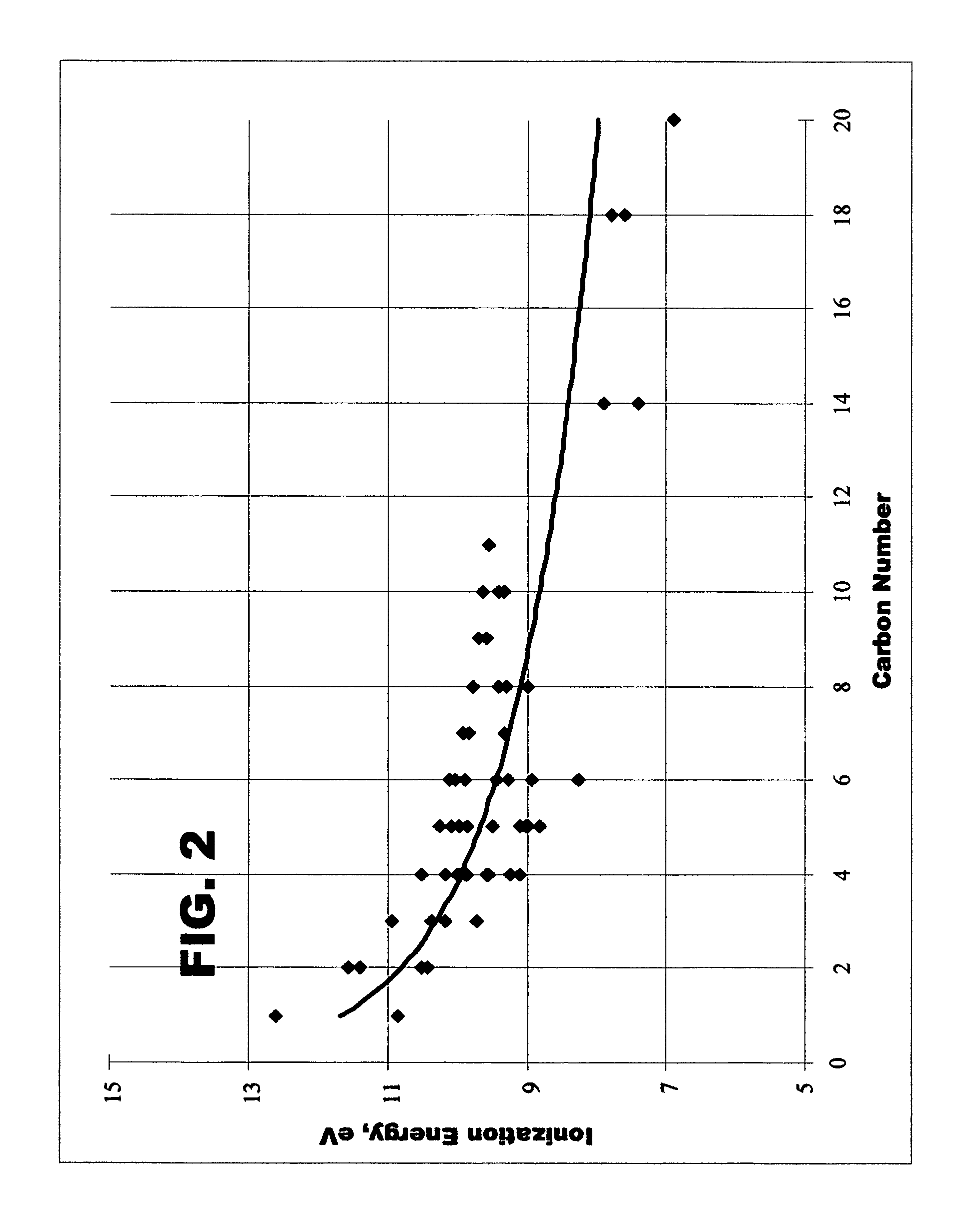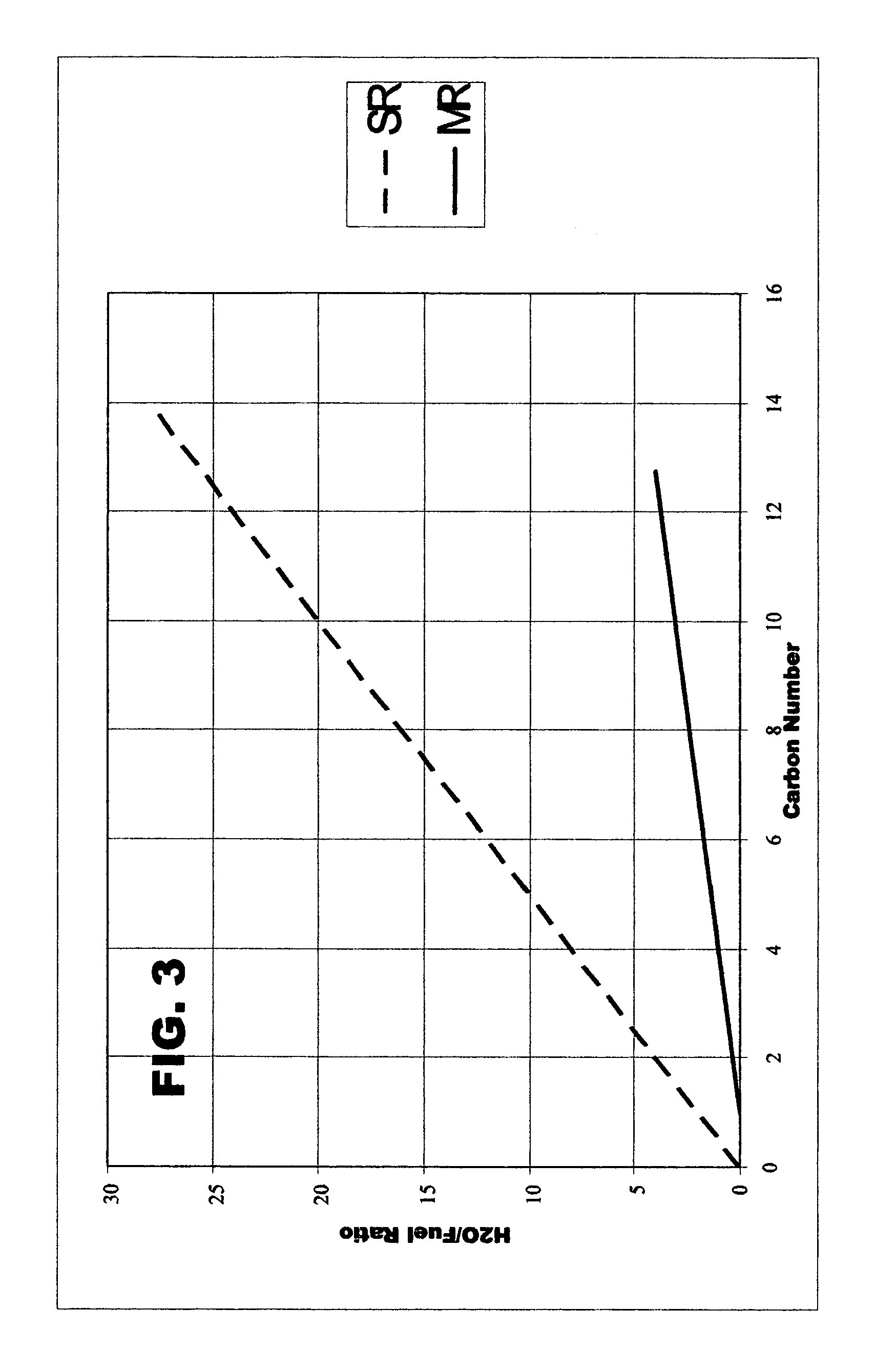Plasma reformer for hydrogen production from water and fuel
a technology of hydrogen production and reformer, which is applied in the field of reformer, can solve the problems of increasing product gas volume, compromising hydrogen safety, and reforming techniques using catalysts that require large reaction area, so as to reduce reduce the consumption of hydrocarbon fuel, and achieve the effect of reducing the cost of hydrogen production
- Summary
- Abstract
- Description
- Claims
- Application Information
AI Technical Summary
Benefits of technology
Problems solved by technology
Method used
Image
Examples
Embodiment Construction
[0015]With reference to FIG. 1 the plasma reformer, has an inlet 33 to admit a flow of a gaseous mixture of H2O and hydrocarbon fuel into the plasma reformer. This mixture is preheated to a temperature in the range of 350° C. to 500° C. external to the reformer and then further heated and mixed in turbulent heating zone 35. The mixture then enters reaction chamber 45. The reaction chamber contains one or more emitter electrodes 10 and one or more collector electrodes 20. Each emitter electrode-collector electrode pair forms an electric circuit and is at high temperature being heated by an external supplemental source of electricity. The electrical energy produces active energetic electrons (harde−), and maintains and controls optimal plasma conditions. These hard electrons produce excited species ions, free radicals, and additional lower energy electrons (softe−) through electron-impaction or electron-expelling dissociation, excitation, and ionization of hydrocarbon molecules. When ...
PUM
| Property | Measurement | Unit |
|---|---|---|
| Temperature | aaaaa | aaaaa |
| Temperature | aaaaa | aaaaa |
| Diameter | aaaaa | aaaaa |
Abstract
Description
Claims
Application Information
 Login to View More
Login to View More - R&D
- Intellectual Property
- Life Sciences
- Materials
- Tech Scout
- Unparalleled Data Quality
- Higher Quality Content
- 60% Fewer Hallucinations
Browse by: Latest US Patents, China's latest patents, Technical Efficacy Thesaurus, Application Domain, Technology Topic, Popular Technical Reports.
© 2025 PatSnap. All rights reserved.Legal|Privacy policy|Modern Slavery Act Transparency Statement|Sitemap|About US| Contact US: help@patsnap.com



